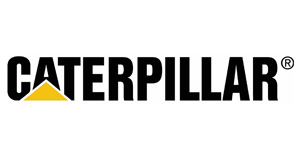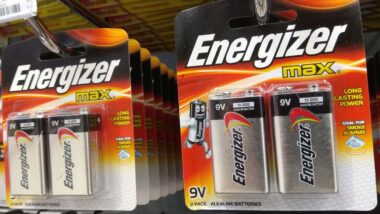Top Class Actions’s website and social media posts use affiliate links. If you make a purchase using such links, we may receive a commission, but it will not result in any additional charges to you. Please review our Affiliate Link Disclosure for more information.

Scenic Boundaries filed Caterpillar class action lawsuit on behalf of any company or individual who purchased or leased a vehicle with a 2007, 2008, 2009 or 2010 Caterpillar C-13 or C-15 heavy duty on-highway diesel in Minnesota, known as the MY2007 CAT engine. Scenic Boundaries’ filing states that the engines contain exhaust emission controls to reduce diesel engine exhaust emissions in compliance with the Environmental Protection Agency’s 2007 Heavy Duty On Highway Emissions Standard.
The Caterpillar class action lawsuit alleges that the exhaust emission control system, known as the Caterpillar Regeneration System or CRS, “is defective in material and/or workmanship causing the vehicle to not function as required under all operating conditions, on a consistent and reliable basis, even after repeated emissions warranty repairs and replacements. These repeated warranty repairs and replacements failed to repair or correct the CRS defect resulting in damages, including diminished value of the vehicles powered by MY2007 CAT Engines, and the costs to re-power the vehicles with diesel engines that are compliant with the 2007 EPA Emission Standards.”
The CRS emissions system, says the Caterpillar class action lawsuit, is comprised of a diesel particulate filter, an after-treatment regeneration device and an electronic control module. The filter burns off the first round of emissions and the regeneration device eliminates the additional emissions. The control module monitors and regulates the emissions reduction. This system, according to the class action, “employs an un-catalyzed (without precious metal catalysts), or insufficiently catalyzed, Diesel Particulate Filter which can only regenerate a small amount of soot trapped by the DPF, periodically requiring active regeneration to increase exhaust temperatures needed to burn off of the filter.”
When the DPF is not working properly, it sends the truck’s engine into an automatic system of warnings known as warning, derate (or reduce the horsepower of the engine), shutdown. Once the engine is shutdown, the driver only has a short time to get off the road, and cannot operate the vehicle. According to the Caterpillar engine class action lawsuit, if the emissions control system is “working correctly, the result is an efficient integration of exhaust emission control under all operating conditions. The basis of Plaintiff’s claims is that the CRS did not and cannot function efficiently and reliably.”
The plaintiffs further allege that they brought their engines in numerous times for repair under warranty, and each time, Caterpillar would attempt to correct the problems, but “the MY2007 CAT Engine exhaust emission controls do not function as required under all operating conditions, and will not do so for the expected life of the vehicle.”
The class action lawsuit claims that Caterpillar “represented to Plaintiff and Class Members that each emission warranty repair would correct the defect; therefore, Plaintiff and Class Members continue to experience defective exhaust emission control, when CAT knew, or should have known, that the CRS defect could not be corrected.”
At the center of the Caterpillar engine class action lawsuit is the EPA regulations that require this device, which proscribe that the emissions systems that are part of engines sold in the U.S. be “reliable,” according to the filing, defined in EPA rules as “the expectation that emission control technologies must continue to function as required under all operating conditions for the life of the vehicle.”
The class action lawsuit is filed based on multiple breach of warranty allegations, plus claims that Caterpillar violated Minnesota’s Deceptive Trade Practices Act and Prevention of Consumer Fraud Act.
Scenic Boundaries is represented by Garrett D. Blanchfield and Roberta A. Yard of Reinhardt Wendorf & Blanchfield, Richard J. Burke and Jamie E. Weiss of Complex Litigation Group LLC, and Jonathan Shub of Seeger Weiss LLP.
The Caterpillar Diesel Engine Class Action Lawsuit is Scenic Boundaries Trans Inc. v. Caterpillar Inc., Case No. 0:14-cv-01352, in the U.S. District Court for the District of Minnesota.
UPDATE: A second CAT engine class action lawsuit was filed in Colorado on June 24, 2014, alleging the same problems and seeking compensation for owners.
ATTORNEY ADVERTISING
Top Class Actions is a Proud Member of the American Bar Association
LEGAL INFORMATION IS NOT LEGAL ADVICE
Top Class Actions Legal Statement
©2008 – 2024 Top Class Actions® LLC
Various Trademarks held by their respective owners
This website is not intended for viewing or usage by European Union citizens.















9 thoughts onCaterpillar Hit With Class Action Lawsuit Over Diesel Engine Problems
I’m suffering the same nightmare,spending a lot of money in repairs on the DPF and the problem never gets solved. It is a real I am going bankruptcy with this truck, I can’t work because is at shop must of the time.
We had a C13 in our last truck which did nothing but cause problems. How do we join the class action lawsuit?
I have that nightmare c 15sdp also . over 100 k later. Ugh! I bought it used. I know it can be fixed, but it is not legal. What do I do? Go broke, or break the law?
Can you tell me the law firm that is handling the class action against cat because I have 11 MX engine with regeneration systems that break down every week and the lost time, cost, damages, rental bills, etc is eating me alive.
My fiance has a CAT engine and has experienced some of the same issues. What does he need to do to get his claim filed as well.
My son had a Caterpillar engine in his truck that broke down constantly and cost a substantial amount of money in damages/repairs/time lost, etc. How can he be included in the lawsuit?
Please contact to me, because the C13 has been shaken my business.
Here is California, please help us out. 213-388-3800
Thanks!
UPDATE: A second CAT engine class action lawsuit was filed in Colorado on June 24, 2014, alleging the same problems and seeking compensation for owners.
I was reading the lawsuit against catepillar and was wondering how to file a claim on this. My husband has a CAT engine in his semi truck and has been having some of these same issue. Please let me know what we can do to try and get this filed.